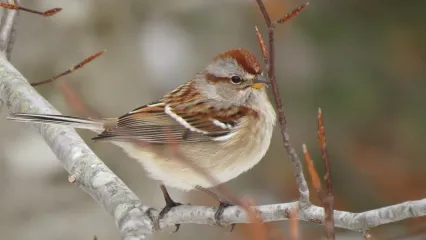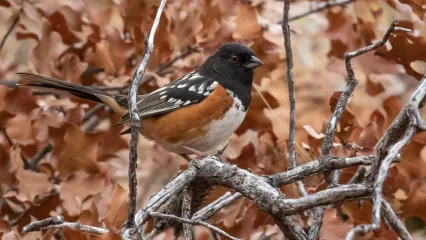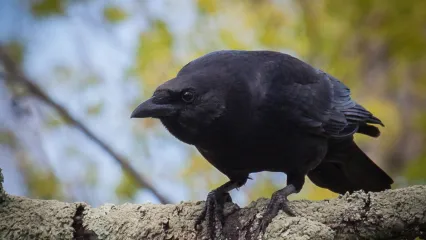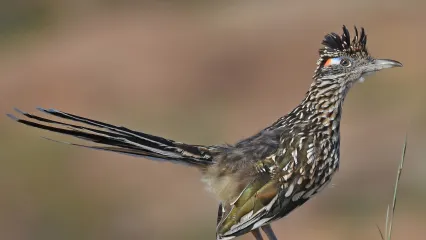
Description
This sparrow has several distinctive characteristics. The chest is plain grayish-white color with a distinct dark spot in the center. The bill is two-toned: the top half is dark or gray; the bottom half is yellowish. The face is gray with a thin, rusty-red line running horizontally from the eye to the back of the head. There is a large reddish “cap” on the top of the head. The wings have two thin, white horizontal stripes, or wing bars, across them. The tail is fairly long and dark in color. American tree sparrows resemble field sparrows, chipping sparrows and swamp sparrows. The American tree sparrow is the only one with a single, dark spot on its chest and a two-toned bill. The field sparrow’s bill is pink, it has a white ring around each eye, and its wing bars are less distinct. The chipping sparrow’s bill is dark gray, it has a black (not reddish) stripe through the eye and a white stripe above the eye. The swamp sparrow’s bill is dark gray, it has a white throat, a grayish face and lacks white stripes or bars on its wings.
Size
This species is approximately 5.5 inches long. The wingspan is 9.4 inches.
Habitat
These birds are usually found in plum thickets, shelterbelts, willow thickets and riparian woodlands within grassland habitats. They may be found in wetlands and cattail marshes. They are uncommon in residential areas except during periods of prolonged cold and snow cover. American tree sparrows are found statewide, but their abundance decreases farther south. They are quite rare in the southern quarter of the state.
Life Cycle
At bird feeders this bird eats small seeds such as millet and sometimes black-oil sunflower seeds. Away from feeders it forages on a variety of small seeds.
How To Observe
These uncommon callers to bird feeders only visit during cold or snowy weather. They primarily feed on the ground, but will take seeds from platform-style feeders. They usually travel in flocks of 15 to 30 birds, but may also be found alone or in very small flocks. They often form mixed species flocks of dark-eyed juncos, field sparrows and white-crowned sparrows during the winter.


